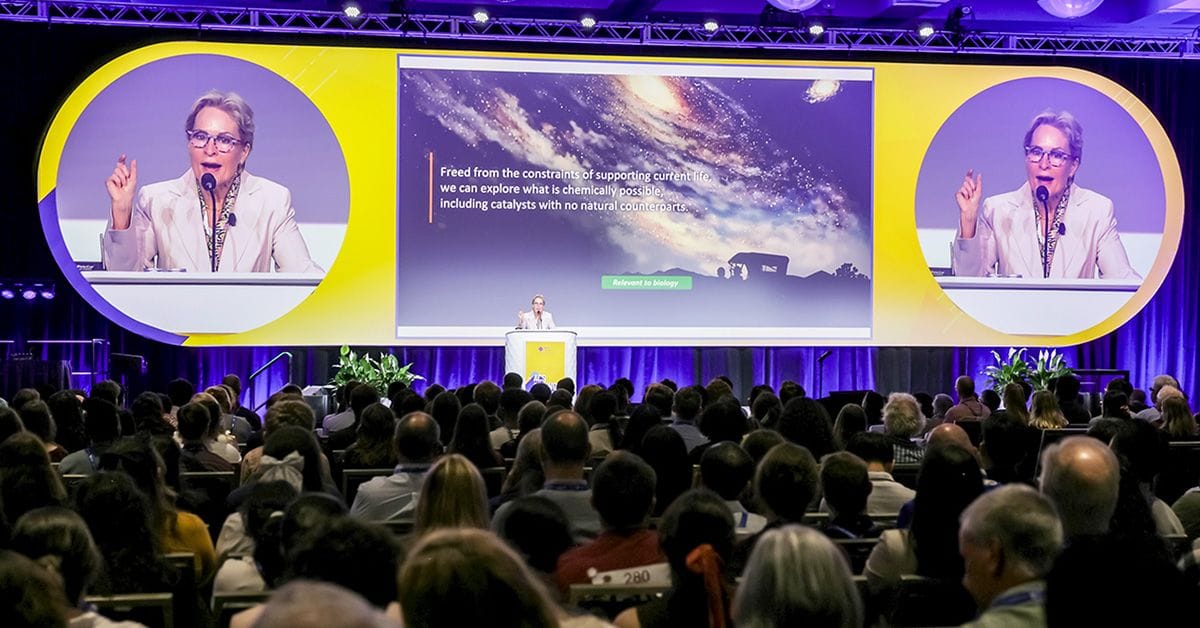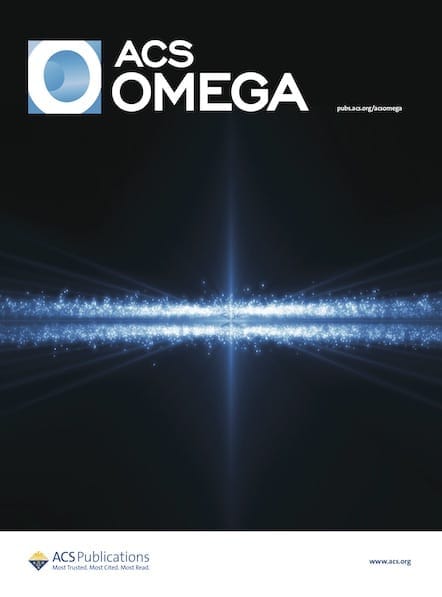Are you more of a Curie or a Lavoisier? Explore the personalities, passions, and legacies of some of chemistry’s historic icons—and take our in-booth quiz at ACS Fall 2025 to see who mirrors your own approach to science!

Chemistry has always been shaped by bold thinkers whose curiosity and persistence have changed the way we understand the world, and these legendary figures each had their own unique way of thinking, experimenting, and solving problems.
At ACS Fall 2025, taking place August 17-21 in Washington, DC and online, ACS Publications will be celebrating the diverse scientific personalities that have shaped the field as we know it today—and you’re invited! Stop by the ACS Booth to take our interactive quiz, “Which Influential Chemist Are You?”, and find out which historical scientific trailblazer mirrors your mindset. Are you a systems thinker like Antoine Lavoisier, or a collaborative force like Lise Meitner? Do you thrive on precision like Rosalind Franklin, or are you driven by real-world impact like Percy Julian?
We hope to see you at ACS Fall 2025! In the meantime, learn more about each of these chemistry greats and explore how their legacies live on in recent ACS journal articles. Ahead of traveling to DC, we also encourage you to browse all of the ACS Publications events taking place at ACS Fall 2025.
Jump to Section:
Rachel Holloway Lloyd
Rosalind Franklin
Marie Curie
Percy L. Julian
C.V. Raman
Lise Meitner
Antoine Lavoisier
ACS Fall 2025: Know Before You Go
Rachel Holloway Lloyd: The Industrial Innovator

Rachel Holloway Lloyd was a trailblazer in more ways than one: she was the first American woman to earn a Ph.D. in chemistry and the first to publish in a major chemical journal in the United States.
Her work in agricultural and sugar chemistry helped establish the U.S. beet sugar industry, applying rigorous chemical analysis to solve real-world problems in food production and processing. Lloyd’s approach was deeply practical: she believed chemistry should serve society. Her legacy lives on in modern studies that bridge fundamental chemistry with industrial applications, especially in the transformation of biomass and sugars into valuable products.
Selected Article Highlights
Biopolymers from Sugar Beet Molasses: Isolation, Characterization, and Bioactive Properties
Jenna Crouse, Shad Sellers, Karen Wawrousek*, and Roberta M. Sabino*
DOI: 10.1021/acsomega.4c09633
Biochemical Characterization of Two GH62 α-L-Arabinofuranosidases from Talaromyces stollii and Their Synergistic Potential with a GH11 Xylanase in Bran Hydrolysis
Wei Chen, Ziqi Zhang, Rujin Bai, Siting Li, Zhou Chen, Aijin Ma*, and Yingmin Jia*
DOI: 10.1021/acs.jafc.5c03843
Effective Exploitation of Sugarcane Byproducts and Industrial Effluents for Strategic Energy Applications: A Review on Recent Developments and Approaches with Special Reference to Microbial Fuel Cells
Babu Indira Bijimol, Liju Elias, Bhuvanendran Revamma Sreelekshmy, and Sheik Muhammadhu Aboobakar Shibli*
DOI: 10.1021/acsabm.5c00239
Rosalind Franklin: The Structural Visionary
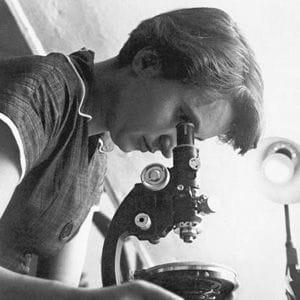
Rosalind Franklin’s legacy is defined by precision, patience, and a steadfast commitment to scientific truth. Her X-ray diffraction images of DNA, especially the famous Photo 51, were instrumental in revealing the double helix structure, though her contributions were long underrecognized. Franklin’s meticulous approach to crystallography set a new standard for structural biology, emphasizing the power of visual data.
Her influence continues today in research that probes the fine details of biomolecular architecture. With the help of advanced spectroscopic and crystallographic techniques, today’s scientists continue to uncover more about how DNA’s structure is shaped by its environment.
Selected Article Highlights
Designing Highly Ordered Helical and Nonhelical Porous Crystalline and Disordered Nonhelical Columnar Liquid Crystalline Self-Organizations
Dipankar Sahoo, Mihai Peterca, and Virgil Percec*
DOI: 10.1021/jacs.4c09127
High-Speed Sequential DNA Computing Using a Solid-State DNA Origami Register
Qian Zhang, Mingqiang Li, Yuqing Tang, Jinyan Zhang, Chenyun Sun, Yaya Hao, Jianing Cheng, Xiaodong Xie, Sisi Jia*, Hui Lv*, Fei Wang*, and Chunhai Fan*
DOI: 10.1021/acscentsci.4c01557
Six-Letter DNA Nanotechnology: Incorporation of Z-P Base Pairs into Self-Assembling 3D Crystals
Simon Vecchioni, Yoel P. Ohayon, Carina Hernandez, Shuichi Hoshika, Chengde Mao, Steven A. Benner*, and Ruojie Sha*
DOI: 10.1021/acs.nanolett.4c03949
Marie Curie: The Radiochemical Revolutionary
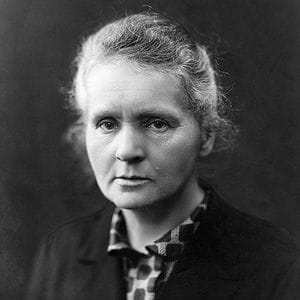
Marie Curie’s work with radioactive elements helped define radiochemistry as a discipline, earning her two Nobel Prizes. Her methods for isolating polonium and radium created new tools for science and medicine, and her research laid the groundwork for nuclear imaging and cancer treatment.
Curie approached chemistry with a determined focus on measurable change—how energy and matter interact at the atomic level. That mindset continues to shape radiopharmaceutical development today, especially in the design of imaging agents that track biological processes in real time.
Selected Article Highlights
Polonium: Structural Evolution, Electronic Properties, and Decay Dynamics Simulation at Cluster Size
Wenli Zhou, Yongxin Hu, and Jianyi Ma*
DOI: 10.1021/acs.jpca.5c01880
Measuring the Elusive Half-Life of Samarium-146
Mara Johnson-Groh
DOI: 10.1021/acscentsci.4c02221
Radiosynthesis, In Vitro Characterization, and In Vivo PET Neuroimaging of [18F]F-4 for Tau Protein: A First-in-Human PET Study
Anton Lindberg, Junchao Tong, Chao Zheng, Andre Mueller, Heiko Kroth, Andrew Stephens, Chester A. Mathis, and Neil Vasdev*
DOI: 10.1021/acschemneuro.4c00866
Percy L. Julian: The Practical Synthesist
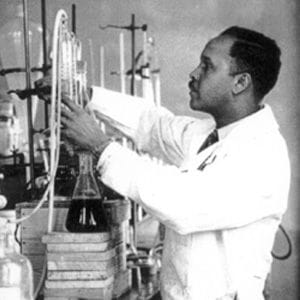
Percy Julian transformed chemistry into a tool for access. His work in synthesizing hormones like progesterone and cortisone from plant-based sources made critical medicines more affordable and scalable. Throughout his career, he focused on efficiency, utility, and the social impact of chemistry, bringing industrial-scale synthesis to problems that mattered.
Julian’s influence continues in research that emphasizes practical outcomes, especially in pharmaceutical chemistry and materials designed for drug delivery and purification.
Selected Article Highlights
Total Synthesis of Enlicitide Decanoate
Hongming Li, David A. Thaisrivongs*, Gao Shang*, Yonggang Chen, Qinghao Chen, Lushi Tan, Kai-Jiong Xiao, Reed T. Larson, Jeffrey T. Kuethe, Joshua Lee, Nicholas R. Deprez, Andrew F. Nolting, Marc Poirier, Paul G. Bulger, Erik L. Regalado, Mirlinda Biba, Fuh-Rong Tsay, Jimmy DaSilva, Chris K. Prier, Christopher A. Strulson, Kerstin Zawatzky, Zhu Liu, Justin A. Newman, Kathleen Sokolowsky, Weijuan Tang, Kari Hullen, Nimisha Thakur, Cody Welch, Smit Patel, Yu He, Jing Xu, Narayan Variankaval, Artis Klapars, Jongrock Kong, Richard Desmond, Richard Varsolona, Peter E. Maligres, Carlos A. Pons Siepermann, Lee Robison, Tiffany Piou, Clara Hartmanshenn, Anagha Chandra, Anisha Patel, Marc R. Becker, Guiquan Liu, Jianjun Duan, Baoqiang Wan, Chengqian Xiao, Yongpeng Yuan, Xiaohui Cao, Lu Chen, Ruxia Yi, Zheng Wu, Minyi Feng, Donghong Li, Zhiyan Song, Yawei Dong, Julin Sun, Biao Li, Guangxin Shao, Louis-Charles Campeau, and Jingjun Yin
DOI: 10.1021/jacs.4c15966
Concise Synthesis of Optically Active Cyclopropane β-Amino Acid Derivatives via Olefination of Cyclopropanone Surrogates
Myunggi Jung and Vincent N. G. Lindsay*
DOI: 10.1021/acs.orglett.5c00845
Next-Generation Metal–Organic Frameworks: Shaping the Future of Steroid Compound Management
Haidong Jiang, Siyan Xu, Xiaomeng Xiang, Mengfan Zhao, Ying Wang, Xiangyu Liu, Bing Liu*, and Qing Chen*
DOI: 10.1021/acsomega.4c11671
C.V. Raman: The Spectral Explorer

C.V. Raman’s discovery of inelastic light scattering—now known as the Raman Effect—opened a new window into the molecular world. His work showed that light could interact with matter in ways that revealed vibrational energy levels, giving chemists a powerful tool to identify and study substances without altering them.
Raman’s approach was rooted in curiosity about the natural world, but his discovery became foundational to analytical chemistry, materials science, and biomedical imaging. His legacy is honored annually in India on National Science Day, a celebration of scientific progress held on the anniversary of his discovery of the Raman Effect. Today, Raman spectroscopy is used to probe everything from pollutants in water to protein folding in cells.
Selected Article Highlights
Probing Photocatalytic Reduction Pathways of CO2 by Catalyst PbBiO2Br Using In-Situ Raman Spectroscopy
Kang-Yu Hsiao, Fu-Yu Liu, Chiing-Chang Chen*, and I-Chia Chen*
DOI: 10.1021/acscatal.4c06401
Breath Analysis via Surface Enhanced Raman Spectroscopy
Adrián Fernández-Lodeiro, Marios Constantinou, Christoforos Panteli, Agapios Agapiou, and Chrysafis Andreou*
DOI: 10.1021/acssensors.4c02685
Unveiling the Molecular Secrets: A Comprehensive Review of Raman Spectroscopy in Biological Research
Anshuman Chandra, Vimal Kumar, Umesh Chandra Garnaik, Rima Dada, Imteyaz Qamar, Vijay Kumar Goel, and Shilpi Agarwal*
DOI: 10.1021/acsomega.4c00591
Lise Meitner: The Collaborative Theorist

Lise Meitner played a central role in explaining the process of nuclear fission, co-authoring the theoretical framework that described how atomic nuclei could split and release vast amounts of energy. Working with her nephew Otto Frisch, she interpreted experimental results from Otto Hahn and Fritz Strassmann—work that would later underpin nuclear power and medicine.
Meitner’s approach was deeply collaborative and interdisciplinary, bridging physics and chemistry at a time when both fields were rapidly evolving. Though she was overlooked for the Nobel Prize, her contributions are now widely recognized, including through recent honors such as the ACS Division of the History of Chemistry (HIST) 2023 Citation for Chemical Breakthrough Award.
Selected Article Highlights
Ultralow Thermal Conductivity and Excellent Gamma-Radiation Resistance of a Novel Boron-Doped Silica Aerogel for Thermal Protection in Nuclear Applications
Lixia Yang*, Jingyi Xie, Qiong Wu, Zhaofeng Chen*, Shijie Chen, Longpan Yin, Xingyu Wang, Bin Hou, Huanjun Zhu, and Sheng Cui
DOI: 10.1021/acssuschemeng.4c10529
Engineering Programmable Electroactive Living Materials for Highly Efficient Uranium Capture and Accumulation
Feng-He Li, Zi-Han Liang, Hong Sun, Qiang Tang*, and Han-Qing Yu*
DOI: 10.1021/acs.est.4c07276
Ultrafast Photoassisted Capture of Uranium over Cu2O/CuO Heterojunction Enabled by Rapid Interfacial Electron Transfer
Huanhuan Liu, Hongliang Guo, Dingping Huang, Li Zhou, Jia Lei*, Yan Liu*, and Wenkun Zhu*
DOI: 10.1021/acsmaterialslett.4c02121
Antoine Lavoisier: The Framework Architect

Antoine Lavoisier completely redefined how chemistry was practiced and understood. He introduced the law of conservation of mass, named elements like oxygen and hydrogen, and co-authored the first modern system of chemical nomenclature. His Traité Élémentaire de Chimie (1789) laid out a vision of chemistry based on careful measurement, reproducibility, and clarity—principles that remain central to the field.
Lavoisier’s influence is still felt in how chemists design experiments, classify substances, and communicate results. His legacy is especially visible in analytical chemistry, reaction stoichiometry, and the language of the periodic table.
Selected Article Highlights
Effective Performance Modifications for a Composite Rocket Propellant via Coagglomerates of Cyclic Nitramines
Veerabhadragouda B. Patil*, Rafał Lewczuk, Filip Sazeček, Paulina Paziewska, Petr Stojan, Petr Bělina, and Svatopluk Zeman*
DOI: 10.1021/acsomega.5c01848
A New Optical Analysis System for Online Measurement of NO Temperature and Concentration in Combustion Processes
Mu Li, Qiwen Zhou, Jie Gao, Rui Zhu, Fei Xie, Qiang Gao, and Yungang Zhang*
DOI: 10.1021/acs.analchem.4c04968
Catalytic Combustion of Methane over Noble Metal Catalysts
Huimei Duan*, Fanxin Kong, Xinze Bi, Lei Chen, Huangtong Chen, Dongjiang Yang*, and Weixin Huang*
DOI: 10.1021/acscatal.4c05650
ACS Fall 2025: Know Before You Go

Connect with ACS Publications at ACS Fall 2025!
